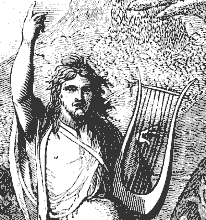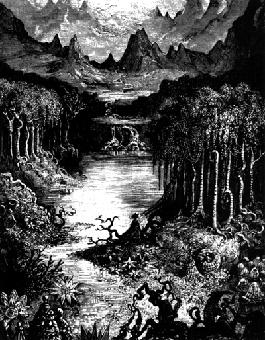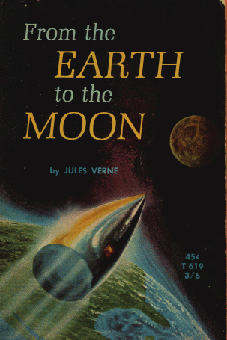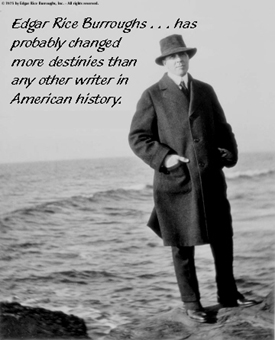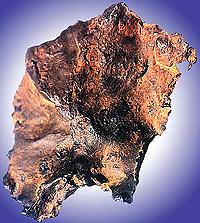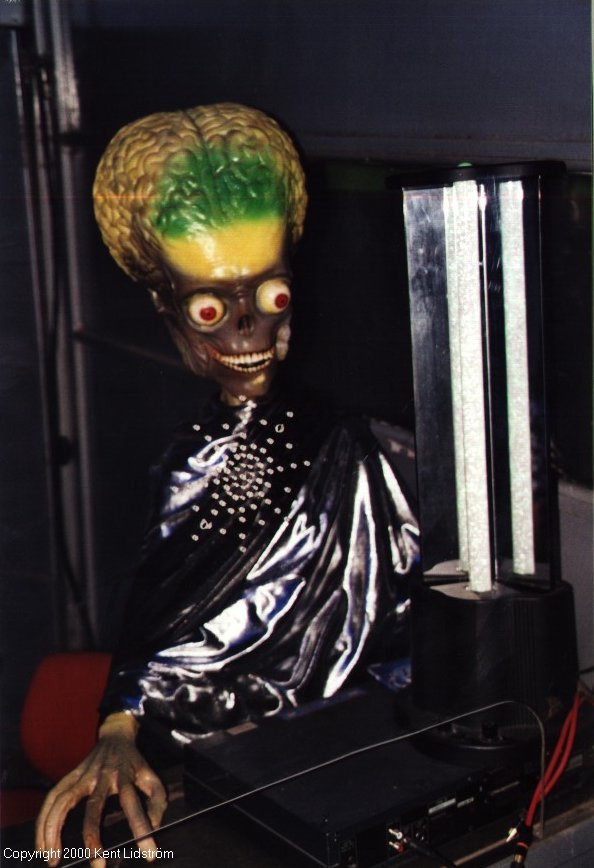

The Venus Transit 2004
... Extended InfoSheet D10
Venus in Science Fiction
Is there life on other worlds, especially on the other worlds of the solar system? This fundamental question was discussed not only by philosophers and scientists. It was also a theme in numerous stories and novels. What kinds of landscape exist on other worlds, what life forms inhabit them (men, plants and animals) and are these supposed life forms intelligent enough and evolved enough to contact us?
In ancient times philosophers discussed this problem vigorously. The world which was the focus of their discussions was the Moon because this neighbour of the Earth is very easy to observe with the unaided eye. Its shining disc shows bright and dark regions, which they believed were continents and oceans. Our natural satellite was seen as a mirror image of the Earth. Greek thinkers like Opheus, Thales, Anaxagoras, Philolaos of Kroton and Xenophanes believed that the Moon was the home of plants and animals similar those on the Earth, only much more beautiful.
This scenario was described by Plutarch (46-120 AD) in his book "The face of the Moon's disc" His book triggered the first novel on space travel, written by the Greek satirist Lucian (120-180 AD). It had the title "Vera Historia" and tells of the crew of a sailing ship who were flung by the force of a storm onto the Earth's neighbour. There they not only have meetings with the lunar inhabitants but they also witness a war against the inhabitants of the Sun. Stories and novels published in the following centuries also told about life on the Moon. For example, in 1634 "Somnium seu astronomia Lunaris" was published by Johannes Kepler (1571-1630, discoverer of the planetary laws). After the telescope was established as the main tool of astronomy, scientists asked more and more if the planets known from old - Mercury, Venus, Mars, Jupiter and Saturn - were also abodes of life.
When the French astronomer Pierre Gassendi (1592-1655) mentions 'stars' in his book 'Are the stars habitable', he means the Sun and the planets because the stars were still believed to be holes in the outer and most distant celestial sphere. Gassendi believed that the varying amounts of solar radiation which reached the planets would characterise the conditions on the planets and the nature of their inhabitants. So we have to imagine that the inhabitants of Mercury were much smaller and less perfect than the Venusians and they in turn were inferior to the Earth's inhabitants.
Bernard de Bovier de Fontenelle (1657-1757) also believed in Venusian inhabitants in his book "Entretiens sur la Pluralité des Monde" published in 1686. It was the first well-founded scientific novel about extraterrestrial worlds. The author spoke about civilisations on Mercury, Venus and Saturn. Fontenelle's novel was the most popular book of this type until the end of the 18th century. The Dutch astronomer Christian Huygens (1629-1695) extended the ideas of inhabited worlds in the solar system. After observing spots on the surfaces of Jupiter and Mars he came to the conclusion that there were clouds and water there.
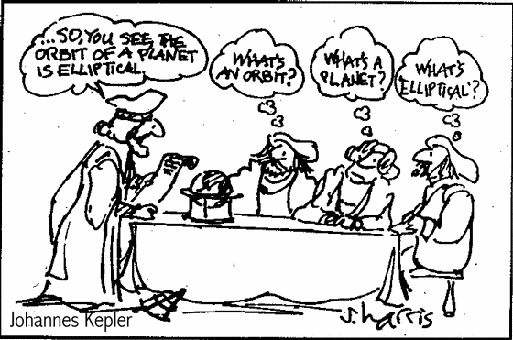
Johannes Kepler (credit: S. Harris)
Most of the stories and novels about extraterrestrial worlds dealt with life on the Moon, followed by Jupiter and its satellites (which were seen as navigational aids for the inhabitants) and lastly by Mars. This order reflected the actual level of observation or of technical equipment, especially telescope development. The construction of larger and better telescopes with higher resolution gave a lot of new information to astronomers about the physical properties of the planets.
| | |
Immanuel Kant , the famous Königsberg philosopher (1724-1804), put forward the theory that the fauna and flora of individual planets were made out of material the lightness and faintness of which depended on their distance from the Sun. So the inhabitants of Earth and Mars were situated at a low level, much lower than the intelligence of the inhabitants of Venus and Mercury. As a proof of the degree of cultural evolution he cited the number of the rings and satellites. Kant thought that their absence from Venus and Mercury was justified, because of the fact that irrational creatures existed on these worlds, they were deserts.
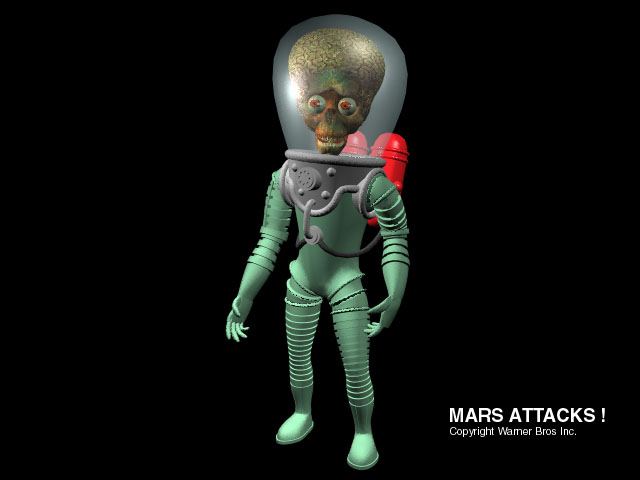
Martians (credit: Warner Brothers)
Scientists who also discussed the fundamental question of life on other worlds included the German/English William Herschel (1738-1822), who discovered the planet Uranus, and the German astronomer Franz von Paula Gruithuisen (1774-1852), a Munich professor. The latter wrote about cities, streets and fortifications on the Moon and said the Venusians celebrated fire festivals very easily because trees grew much more vigorously than even in the untouched jungles of Brazil.
Up to the middle of the 19th century, ideas of life on other planets were based mostly upon pure fantasy or more or less scientifically based assumptions but not on hard facts. This situation changed radically with the discovery of spectacular channels on Mars by the Italian astronomer Giovanni Schiaparelli (1835-1910) in the year 1877. That was the beginning of novels about Mars. Ten years before the French author Jules Verne (1828-1905) had published a novel "De La Terre à La Lune" and had thus founded science fiction.
In 1897 and 1898 two science fiction novels about Mars were published which set standards for the next generation of authors and formed our picture of this planet for years to come: the German Kurt Lasswitz (1848-1910) wrote "On two Planets" and Englishman Herbert George Wells (1866-1946) wrote "The War of the Worlds" . They described Mars as a long extinct world, once peopled by a highly civilised people who tried to invade the Earth. The period 1900-1914 saw the blossoming of the Mars theme in science fiction. From this time date the eleven Mars adventure volumes of the American writer Edgar Rice Burroughs (1875-1974), author of the famous jungle hero Tarzan . It was Burroughs who created the picture of green Martian men.
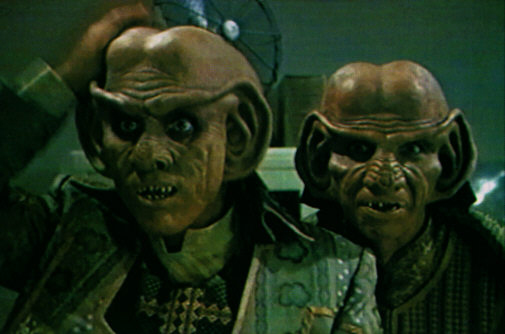
Little Green Men (credit: Strar Trek)
New knowledge of chemistry seemed to show that all the planets of the solar system contain the same chemical elements as the Earth. So scientists at the beginning of the 20th century concluded that Venus had an atmosphere like Earth's with similar gaseous components. The French astronomer Camille Flammarion (1842-1925) described these ideas very impressively in his book "Inhabited Worlds" .
Venus came to the fore as a theme for science fiction novels in the 1930s. These depicted the planet as a virgin world with fauna and flora which existed on Earth during the Carboniferous and Permian periods (jungles, deserts, oceans, volcanoes and dinosaurs). The stories reflected the colonial history of Africa and the American West. But Venus got fewer reviews than Mars: Henry Kuttner's "Fury" in 1947 and Fredrik Pohl's and M. C. Kronbluth's "The Space Merchants" in 1952. The best known novels about Venus were written by Edgar Rice Burroughs: "Pirates of Venus" (1934), "Lost on Venus" (1935), "Carson of Venus" (1939), "Escape on Venus" (1946) and "The Wizard of Venus" (posthumously in 1970).
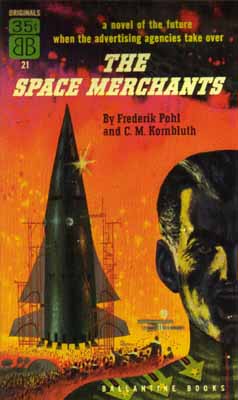
The Space Merchants (credit: Ballantine Books)
The Polish author Stanislav Lem was one of the first to create an image of Venus similar to our present knowledge of the surface conditions on the planet. In his novel "The Astronauts" (1951), he described the surface of Venus as a hellish place. The astronauts who visit it on an international expedition see that the cause is not natural. When they discover the remains of an extinct high technology civilisation, they find evidence that the inhabitants had committed nuclear suicide and destroyed their environment. The visitors from Earth also discover indications that the Venusians had planned to invade the Earth and only the atomic disaster had thwarted their perfidious plans. The Siberian Meteor of 1908 was really a pathfinder space ship for the Venusian invasion fleet.
The first flybys of Soviet and American spacecraft and their transmitted data brought to an end the classical Venus science fiction novels, because they showed that Venus was the most hellish place in the solar system and so no longer suitable for colonising adventures. Science fiction writers emigrated to the extra solar planets or exoplanets of our galaxy, because they thought there was no danger that they would be investigated with astronomical instruments to prove the reality of their physical properties.
| | |
But slowly things are beginning to change. In the near future new technology telescopes will make it possible for scientists not only to discover exoplanets but also to investigate their characteristics exactly. A new generation of science fiction writers like Ben Bova has realized that a "modern" planet Venus can also be a fascinating place for exiting and dramatic adventures. His book "Venus" published in 2000, is worth reading as an example of this new trend.
| | |
Go to the corresponding Brief InfoSheet
Back to the List of Extended InfoSheets.

